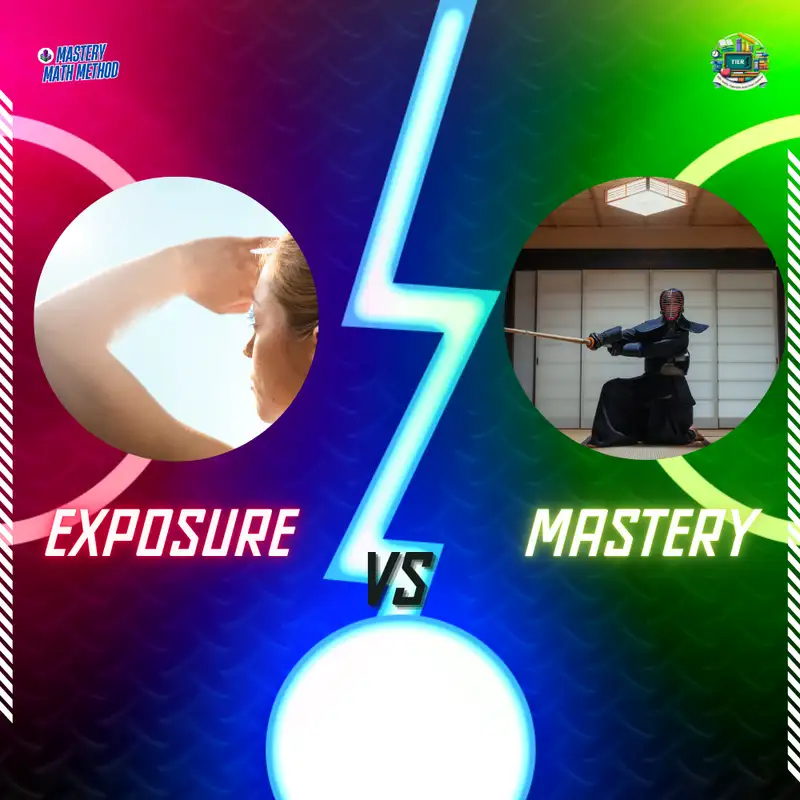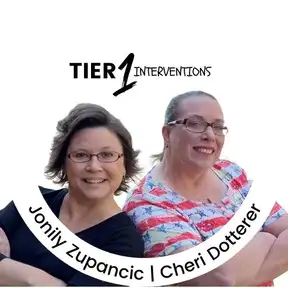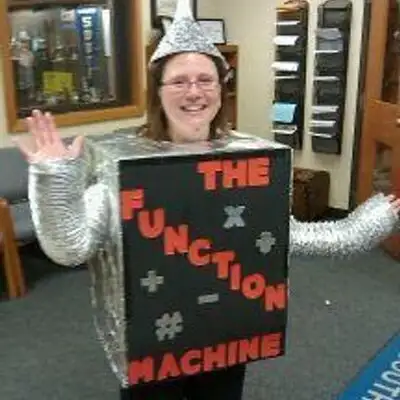
Why Exposure Matters More Than Mastery
T1I August 2025 Segment 4: Locker Problem
===
Jonily: [00:00:00] Hey everybody, it's Cheri Dotterer here at Tier One Interventions podcast.
I'm here today with Jonily Zupancic and we are in class today with a live group of ladies and gentlemen who are learning about the Mastery Math method. So I'm gonna let Jonily talk and if there's any intervention that I wanna add to the puzzle, we will do but for now, I'm signing it all over to Jonily and let us learn a little bit about mathematics.
Girl. Y'all, this is Jay-Z. I'm Jonily Zupancic, I'm your math specialist, your main Mathineer. I if you are listening to this podcast or you're watching this podcast on YouTube I want to give a disclaimer and a warning. This is level two. You're listening in on a level two version of Mastery Math method.
The big question is how? The answer is the mastery math method. [00:01:00] So let's jump into the content. Remember, this is level two. We're assuming that you've already been trained on level one stuff. So if you haven't get access to mastery math method. Tier one, interventions, level one. Still listen to this, but then go get the level one and then this will make more sense.
Here we go, my friends. I'm gonna share my screen and I've got a note page for today. And this is tier one, Uplevel. Today's math topic is lockers, pizzas, rectangles. Oh, my lockers, pizzas, rectangles. Oh, my lockers, pizzas, rectangles. Oh, mine. So we are now in level two going to connect our reference tasks.
We at. Tier one Interventions [00:02:00] Mastery Math Method have what we call a dirty dozen. We have 12 reference tasks that are exactly the same from preschool through high school for mathematics kid. The goal is for kids to experience these tasks every single year, multiple times of year. That's the s in seasons.
We want them to see each task every season of the year, and then every single year, the same exact task. So the first grader is seeing the same task as the sixth grader, and one of those tasks is locker problem. Another task is pizza problem, and another task is making rectangles. So in level two Mastery Math Method, tier one interventions, we are now going to look at the connections between those Dirty dozen tasks.
Natalie, you talked on another session we were on this past week. I'm ready to up level, like my goal this year, my word of the year is uplevel. Here we go. So the locker problem, and I'm gonna just [00:03:00] explain it as we go, but the locker problem is such that and what you're seeing if you're watching this on YouTube is a game board that's, that has 24 spots.
So the locker problem is such that there's a thousand students, a thousand lockers. If I'm a student 57, my locker is 57. Students play a game of opening closing lockers? One good strategy in mathematics is use a smaller number, use a smaller example, and then we start to generalize for bigger numbers.
So that's just good mathematical practices. So you see this game board of 24, 24 lockers and 24 students, student one goes through, and now I in, in level one, kids actually flip yellow and red counters to open and close. But in this level two, I'm assuming that we and the kids have done locker [00:04:00] problem maybe four or five times just acting it out.
And now we're ready for a different type of notation. So we're gonna go through and student one is going to open every locker, and I'm just gonna put a number one on every locker number. And so now early on, like in tier one interventions and in the first season of school, it's important to not confirm or deny any student accuracies or inaccuracies.
The reason is season one is all about exposure and not mastery. There's plenty of time for mastery. And I was just talking to a colleague, last year a colleague and I were talking, she's actually my curriculum person now, and she is absolutely amazing. And I said in a meeting one time, I said, exposures are more important than mastery.
And she said, we need to have more of a discussion about that. 'cause I'm not sure that I agree [00:05:00] and that is fair and I love it so much, but I'm gonna stand on that ground. To me, exposures are much more impactful. They are much more important, and they have more power on learning than a focus on mastery.
So hear this, a focus on exposures for me and my experience and in our mastery math method, people in our achievement formula, coaches in our experience, more priority on exposures than mastery has had more high level results on data and math achievement. So that's just where we are. So students go through and student one goes through.
Touches locker one first. Doesn't start at locker one touches locker one first, everybody starts at zero. Our starting number is zero. This is important for function. [00:06:00] And then student two touches locker two. First Locker two was open, student two closes it. So what I'm doing on my game board right now is I'm just writing down the number of the students in each part of the game board.
So in mathematics there are four categories of mastery. If students can master these four categories of mathematics tasks and thinking, then we can produce something we've never produced in schools before. And that is number symbol, shape and logic, number symbol, shape, and logic. So what you're seeing now is the symbol, the [00:07:00] notational piece.
And I'm gonna, I'm gonna really uplevel this symbol and notation today. But in season one, when we have kids act out all of these reference tasks for the first time, they've seen it for the initial time. It's really just all about logic and number. It's about playing, it's about experimenting, it's about discovering, creating.
It's about all of those things that are going to entice curiosity. It's gonna, it's gonna draw students in, it's gonna get them on the edge of their seat. That's the culture that I wanna create. But then when we come back to these tasks, the second, third, fourth, fifth, sixth time, we now have to bring it to the symbolic and notation so that we can start to teach high level symbol notation in mathematics.
That is of ultimate importance. Without understanding symbol and notation in mathematics, I cannot have a true understanding of number. So that's where we are right now. [00:08:00] Again, assuming kids have experienced locker problem, now we're gonna give them the game board without the game pieces. 'cause they've played the game.
They're gonna refer to the game in mentally in their head, but now they're going to notate the game. So we want kids to be good notation makers, representation, some of these things in mathematics. Student three then is going to touch locker three first, not start at locker three. Student three is going to touch locker three first and then skip count by threes to touch each of the lockers that are multiples of three.
When I say touch, I mean change the state. So for example, if the locker is open, student three is gonna close it. If the locker is closed, student three is gonna open it. So at [00:09:00] this point, as I'm using a reference task now. In season one I use a reference task as a very conceptual experience, but now after kids have been exposed and they've swam in the dirty bath water and gotten messy with it, and we haven't confirmed or denied any results.
Hey everybody, it's Cheri again. If you're loving these strategies and you want to join our Mastery Math Method Masterclass, we hold this hour long event once a month and we'd love to have you join. What we talk about there is how to improve your math skills in 10 days. Can you imagine 10 days, whether you are a math teacher or an occupational therapist, you can see exactly how to shift teaching so that every student, no matter their starting point, can master core math concepts and reserve.[00:10:00]
So reserve your seat today and go over to disability labs.com/calendar to check out the next event.
Jonily: Now if this is the fourth time kids are seeing this and it's November, then I start to get much more explicit and direct with the reference task. So there's a time for direct and explicit instruction, but not until after there's been conceptual experiences, conceptual development, and a time for students to think problem solve, make sense, and reflect on the experiences that they are engaged in.
So now I will stop, 'cause we'll do this together as a class. This will be the direct instruction piece, what I've just shown to you. All kids have their own game board. They'll [00:11:00] follow, they'll note take just as I'm note taking here for you. And I will stop after student three. And I will say, and these are two of my favorite questions.
What do you see? And what do you notice? See, this is Uplevel. What do you see? And what do you notice? So those of you that are watching and listening to this live, either put in the chat or unmute. What do you see and what do you notice? What do you see? And what do you notice?
What do you see? And what do you notice?
Patterns. Patterns. With the numbers. Some lockers are only touched once. Ooh, that's fancy. That's fantasy. Oh, sugar [00:12:00] multiples of three have all of the numbers. Whoa. What else do you see? And notice.
Now I am gonna use my next prompt. That is my favorite. It's my favorite Three words. My favorite three words are not I love you. They are. Tell me about what and notice. Tell me about the seeings and noticings. So either in the chat or unmute. Tell me about the seeings and noticings.[00:13:00]
And this is a lot of times what'll happen in our classrooms, we'll get crickets. And I can choose as the teacher, the educator, the facilitator, to respond in one of two ways. When we get crickets, when we have a prompt, we could respond one of two ways. In our classroom, we could say, come on guys, wake up.
What are you do to, we could respond in a way that is going to negate vulnerability. Or we can respond in the mastery math method way, which is going to enhance opportunities for vulnerability. So when we get crickets in our classroom, this is what I say to my students. I know guys, this is so weird. It's like icky and nobody's talking.
And I just keep asking the prompt. And then I sit and wait. So like we're sitting in this awkward silence. [00:14:00] This is good. This is actually a good thing. It feels weird. It feels weird. But when real learning is about to happen, you have to first feel weird. You have to, success only comes through struggle. You take the crickets like, like you hear, like nobody's talking.
And I get to choose. I get to choose the culture that I'm about to create in my room based on how I respond to nobody answering. You get to choose. You have control over that. And if you respond in a way that's going to negate vulnerability, negate risk taking, make kids feel bad, shame on you. Shame on you [00:15:00] in the mastery math method.
In our core classrooms, we need to respond with, you know what guys? I know this is weird, but this is this is what we're gonna feel here in this room. I want you to be comfortable being uncomfortable. See, it's through reference tasks that we get to teach life lessons, that we get to teach soft skills.
Not only do we get to teach high level math content, but we can do it at the exact same time during the exact same lesson that we're teaching those soft skills that are gonna make kids good citizens and employers. One day, I'm sorry, employees, one day that employers will love,
Kirk: forget you. My students are gonna be employers.
Jonily: Boom, there you go.
Forget you and your [00:16:00] mom and your sister and your job, and you're broke car. Everything except your dog. Kirk, you're always inspiring me to break out in song.
Other
Natalie: thoughts, crime numbers are only touched once.
Jonily: Boom. Look, I'm dropping all these words of wisdom and Natalie's just mouthing. Okay,
Natalie: I'm here for the math today. Jonily. I'm ready to level up my math. That's fair.
Jonily: I love you. Ooh, Kathy, we often don't give kids time to think in the classroom. You guys, okay?
This is profound. I don't wanna skimm by this. Cheri, you may have some like bomb dropping teaching after I say this. Okay. So Kathy put a comment in that [00:17:00] says, we don't often give kids time to think in the classroom. What I'm going to say is for our special ed students and our students with special needs and our kids that have processing issues and A DHD, and these kids don't struggle to learn because of all of the things we think they struggle to learn because they never have enough process time.
And typical, traditional mathematics doesn't allow for that. Here's one reason why. One reason why, and I'm gonna give a shout out to Dan Meyer. You may not know Dan Meyer, but about, I don't know, 15, 18 years ago, I heard of Dan Meyer DAN, and M-E-Y-E-R. Go to YouTube, Google him. Look at Dan Meyer's, Ted Talk.
He talks [00:18:00] about for he, he was a high school math teacher and talks about how when we teach math, we're selling something that kids like, we can't even give away to kids. Not only do they not wanna buy it, but they don't even want it for free. And we teach math in this sitcom approach, meaning if we have kids for 42 minutes, we feel like we have to end every story by the end of the 42 minutes.
So our kids that need more time to think and process, they may not need any other intervention. Half of our kids that are in math intervention, actually, what they may only need is more time to think and process. That's it. That's it. How do we do that in math classes? The opposite of what we do. In typical traditional, we don't confirm and deny half of the prompts and questions that we give every single day.
We leave a lot of these [00:19:00] things to linger. Cognitive science says that if we let these things linger, the brain will subconsciously think about it. So kids will automatically think about things if we don't confirm or deny. So in typical traditional math class, when we confirm or deny all thinking stops.
And if you say, oh my gosh, my middle school kids they don't even think, they don't even care. They don't even, they don't even try. They don't even, why we've done it to them. This is a learned behavior. This is not natural human behavior. It is not natural human behavior. This is a learned behavior and we as educators have done it to them.
So if you have middle school students that you think are lazy and don't try, it's because they've had a lack of high quality instruction. Because here's what happens then, oh, these kids [00:20:00] aren't da. But we ask these questions and the questions are answered by somebody else in the classroom within 30 seconds.
So by the time kids are in middle school, they're like, they have subconsciously said, they may not even realize what they're saying to themselves, but they're saying to themselves, if I just sit back and do nothing, someone else is gonna answer the question. And if another student doesn't answer the question, the teacher will.
So by the end of class, sometimes within 30 seconds, somebody's going to answer the question for them. So they have been trained to not think we've done this to them. It is not the student's fault.
Cedric: But story doesn’t just live in books, it’s in our culture. And few stories capture kids’ hearts like Pixar. Join us next time for our next episode as we show how Toy Story can help you teach core math concepts with joy.
Until then, remember. [00:21:00] every student deserves the chance to see themselves as a mathematician. And as Cheri and Jonily say, Go Be Awesome! Go Be Brilliant! For you were put here for such a time as this.
Episode Video
Creators and Guests


